




























ADEFINITIVEonline carbon calculation platformfor Australia’s agriculture, fisheries and forestry sectors has been given a beta launch in Perth.
The tool,known asthe Agricultural Innovation Australia Environmental Accounting Platform,isthe first ofits kind, enabling the calculation of acarbon footprint at acommodity, enterprise and whole of business level.
The tool providesAustralia with an accessibleand standardised approach to carbon accounting across different commodities.
The beta version of the platformisnow live for grains, beef, sheep, cotton, goats, feedlot and sugar commodities,with pork, dairy, eggs, poultry, rice, fisheries, aquaculture, wine and other commodities tofollow.
Producers and others arenow invited to register theirinterest in trying out thelivebetaversion.The AIA EAPisa pre-competitive enginefor all stakeholders –not just primary producers. Farm and business solution providers, supply chain participants,agribusiness, financial institutions and others can integrate with the engine and buildit into their own service offerings.
The Ag Innovation Australia chief executive, Sam Brown, said the need for an engine that delivers consistent carbon calculationsacross sectors was more important than ever
“Foodand fibreproduction is increasingly becoming front and centreof national pledges to reduce greenhouse gas emissions, and with many commodities exposed to exportmarkets, the pressure to demonstrate environmental credentials is increasing,” Mr Brown said.
“Primary producers and their industries need simple, time-saving tools that allow them to understand their carbon footprint and support decision-making around reducing emissions and capturing new business opportunities.
"It’s crucial that our sector has the data and evidence to help drive positive environmentaland economic outcomes, demonstrating that Australia is ahead of the curve.
“I encourage producers and others to try out the beta version and provide their feedback. The moreengagement we can have at this stage, the better.”
The Environmental Accounting Platform was developed following acomprehensive discovery phase, including interviews with 140 stakeholders, which uncovered anumber of insights.
“Weknow that carbon accounting is confusing and cumbersome. The current default methods formeasurementare spreadsheets which taketimeand often requirealevel of expertise to complete,” Mr Brown said.
“Theyare also commodity-specific, meaning mixed-enterprises cannot easily measuretheir total carbon footprint. And
in other countries, alack of astandardised approach to carbon accounting has led to fragmentation and inconsistent outcomes.
The AIA EAP overcomes those challenges and sets the gold standardfor othersto follow.”
The Grains Research and Development Corpmanaging director, Nigel Hart, said the EAPwouldbeacritical toolfor Australiangrain growers and otherproducers, allowing them to accurately and effectively measureGHG emissions and other carbon calculations.
“Australian producers areunder increasing pressuretobe able to calculateand measure what ishappeningon-farmto meetthe requirementsoftheirfinancial lenders, as well as ensureaccess to international markets,” Mr Hart said.
“This tool will play arole in ensuring they have data to both informdecision making and support the increasingregulatory requirements in this space.”
AIA has established atechnical advisory panel of leading subject matter experts to advise on best practice and ensurethe calculation models align with thelatest science and arecompliant with relevant national standards and protocols.
The chair of the AIA EAP technical advisory panel and director of the Primary Industries Climate ChallengesCentrewithinthe University of Melbourne, Professor Richard Eckard, said the tool markedanimportant step forwardfor Australianagriculture, fisheries and forestry.
“AIA has taken the current Greenhouse AccountingFrameworksfor Australian PrimaryIndustriesand digitised and aggregatedthem into acommonplatform,” Prof Eckardsaid.
“By aggregating calculators into one engine,we will delivera standardised platform, allowing producers to enter data once to achieve awhole of enterprise carbon footprint.
“AIA’s governance processes havealso
solved the issues related to the constant maintenance and streamlined the update of the underlying calculations. Now, apanel of Australian experts review and advise on proposed changes,which arethen scheduled for updating directly in the EAP
“The aim is to provide anew way for producers to baseline their operation, calculate their carbon footprint and make moreinformed decisions.”
Aseparate AIA EAP industry advisory panel is being formed, which will ensure the platform is relevantto specific sectors by advisingon emerging exportand reporting requirements, adoption, and engagement.
“AIA’s mandate and independent, not-forprofit structureenables us to look across commoditiesand facilitate collaboration to solve cross sectoral challenges such as environmental accounting,” Mr Brown said.
“We’ve designed the EAP to be anationalscale solution, makingit areliableand consistent reference point to support the entiresupplychain withunderstanding agricultural emissions.Having asingle source of truth will be an asset for our industryasawholeand will support a united Australian narrative around emissions and emissions reduction.”
He said the beta launch marked an important step -"we arelooking ahead to our next objective". This was "to include calculation methods for key export markets as wellasother rapidlyemerging frameworks such as natural capital.”
The beta version of the AIA EAP is currently live for grains, beef, sheep, cotton, goats, feedlot and sugar commodities. To follow will be pork, dairy, eggs, poultry, rice, fisheries, aquacultureand wine.
To register to access the AIA EAP beta version, visit aginnovationaustralia.com. au/aiaeap












WELLINGTONShireCouncil's FireDanger Period (FDP) finished at 1am on Monday, April 22.
While restrictions have lifted, CFAstill expects the grassfirerisk to remain across the state, so Victorians need to be alert and prepared.
CFADistrict10AssistantChief Fire Officer,Aaron Worcester,said recent rainfall had allowedfor firerestrictions to ease.
“Due to the wet weather (recently),conditions arenow morefavourable for residents to burnoff,” he said.
“Farm paddocks arestartingto green up, and it is now safer for landowners to clean up their properties from recent storm damage and take the opportunity to reduce fuel loads ahead of next summer.”
If possible, landowners shouldalso notify theirneighbours and others nearbywho may be sensitive to smoke so they can take necessary precautions.
Tips for looking after your health when there is smoke canbefound onEPA’s website.
Keep your burn off safe and legal:
Check fire restrictions in your area and always register your burn at firepermits.vic.gov.au;
Check and monitor weather conditions -particularly wind;
To avoidunnecessary calls to emergency services, notify your neighbours beforehand;



It is important that residents check that local conditions aresafe beforeundertaking these activities.
Leave athree-metre fire break, free from flammable materials around the burn;
Have sufficientequipment and water to stop the fire spreading;
Landowners must still registertheir burnoffs, check weather conditions and follow local council laws, as well as EPAlaws and applicable regulations.
Landowners can register their burn-offat firepermits.vic.gov.auorcall 1800 668 511.
Never leave aburn-offunattendedstay for its entire duration, and;
If your burn-offgetsout of control, call ‘000’ immediately








From Page 1






“WE know this decision is leading to more wild dog attacks on livestock. To helpbuild the casefor action, it’s crucial thatfarmers report all interactions with wilddogsto Agriculture Victoria,especiallyattacks on livestock and the numberofstock impacted,” Ms Germano said.
“Farmersinthe north-west can also apply

for AuthoritytoControl Wildlife permits to manage dingoes through the Victorian government.
“It’s asorry state of affairswhen it’s left to us farmers to demonstrate the destruction of this decision, rather than consulting with us beforeitactually happens. Our goal is to directly show the government that their actions have consequences and to trigger an urgent rethink."




ARE you feeding yourlivestock sufficiently?
AgricultureVictoria is advising livestock owners to assess their livestock feedsituation,as failingto provide proper and sufficient feed to livestock is an offenceunder thePrevention of Cruelty to Animals Act 1986.
AgricultureVictoria's SeniorOfficer of Animal Welfare, Morgan Cassell,said producers needtomake appropriate decisions regarding their livestock and ability to provide adequatefeed. Livestock owners andmanagers should ask:
What arethe nutritional requirements for the class and number of livestock Ikeep?
How much feed do Icurrently have on offer and is it meeting my livestock’s energy and protein requirements?
How much supplement feed do I need to be feeding?
Will I have enough? Will I be able to source more?
What alternative options do I have; agistment destocking?
Ms Cassell saidfarmers unsureof any of the answers to these questions should seek advice or do their research.
"Thereare many free resources and tools available to help and once you know the answers you can then make an informed decision, plan and take action," she said.
For information on feeding livestock, visit Agriculture Victoria’s Feeding Livestock websitewww.feedinglivestock vic.gov.au
"You will find information on sheep and cattle nutrition, tools to help calculate feed-on-offer and interpret feed test results and templates to create a feed budget," Ms Cassell said.
"Otherwise, you can also put in a call to your local AgricultureVictoria Livestock Extension Officer on 136 186


Roof restoration and repairs



"Agriculture Victoria will investigate any allegation which concerns an owner or person in charge failing to provide proper and sufficient feed to an animal "
Anyone wishing to make a specific complaint regarding livestock welfare can reach Agriculture Victoria at aw complaint@agriculture vic gov au or on 136 186

Roof replacement
Tile to Tin
Gutter &Downpipe replacement
Colorbond fascias
All roof related timberwork
Leaf guard
Solar powersystems
Easy payments with Handypay Reno Now/Pay Later


























 Eric BARKER
Eric BARKER
LIVESTOCK transporters have highlighted some of the harsh truths and opportunities brought about by growing corporate and political pressure to reduce emissions
A recent livestock transporters conference in Toowoomba heard plenty about fossil fuel companies pulling back on investment, with uncertainty about what is ahead, which is pushing a new norm in the market for one of the industry’s biggest costs
But reducing and moving away from fossil fuels is a difficult prospect for the livestock transport industry, with trucks needing to travel long distances through remote areas on the roughest roads in the country
The conference heard widely about some potential diesel replacements In the opening session, the Australian Trucking Association chief executive, Mathew Munro, said it was important to note how ambitious the federal government targets of 43pc emissions reduction by 2030 and net zero by 2050 were for the industry
“We can’t meet those targets on our own, we can contribute, but we can’t get there,” Mr Munro said
“Our best guess at the moment is that we might be able to go somewhere between 12 and 15pc ”
Mr Munro said the industry was not able to meet the 2030 target through uptake of low carbon vehicles and needed to work with current technology if it was any chance of complying
It is going to have to be through other measures we can do already, like higher productivity vehicles, which move the same freight around through a lower carbon footprint or renewable diesel, which we can use in the current vehicles with a lower footprint ” he said
The transport industry is one of six sectors that will need to work with the federal
government to come up with a net zero plan; agriculture has been the first cab off the rank Mr Munro said ATA would be working with the livestock transporters to make a submission
MANY at the conference were also not writing off the potential for hydrogen trucks in the future if some key issues were sorted out with the technology which has heavy fuel tanks and some issues with storage
New Zealand-based HW Richardson has started transitioning its fleet over to hydrogen, by making its own hydrogen fuel station and retrofitting hydrogen tanks to its trucks Its group general manager of innovation, Gareth Wishart, said the hydrogen hybrids were only using 40pc of the normal diesel requirements
“We inject the hydrogen directly into the air intake of the truck; it is electronically controlled so you can control exactly how much hydrogen you put into the air intake and the engine depending on fuel needs at the time,” Mr Wishart said
“Then as an electric system it will either back off the diesel injection and when you run out of hydrogen it goes back to being a diesel truck
”
Mr Wishart said the move into hydrogen hybrids was in response to customers asking about the low emissions transport and offering incentives He said the company would continue to respond to market demand, whether that is government - or corporate-led
The panel spoke about several issues with hydrogen that industry would need to sort out, mainly to do with infrastructure more than trucks Hydrogen trucks are heavier than diesel trucks, fuel needs to be kept cool and more needs to be known about costs
MR Munro put out a blunt message about electric vehicles
“We already have EVs they are on the road now, they are a real option and for some applications they are quite good,” he said
“ B u t f o r heavier longdistance transport, t h e y a r e just not the solution at this point
The chief executive of the Australasian Convenience & Petroleum Marketers Association, Mark McKenzie, was also blunt in his comments about electric trucks
“We are whistling 'Dixie' if we think we are going to have battery electric drive trains and fuel cell electric trucks in the fleet I will go as far as to say we won’t see it for 20 years, ” he said
“There is a sense here that government policy is being led by ideology and not by sound engineering and economic fact – but that does not preclude the fact that we have to reduce emissions
"At the moment, the cost of installing an electric vehicle charger on a service station for a car which will give me about 400 kilometres in 20 minutes, costs about $150,000 for the kit and the install Then I am going to have to pay the grid operator $300,000$500,000 to give me enough power to utilise and that is something no one is talking about ” Beef Central






THE author of the book, The Forest Wars, Professor David Lindenmayer,isanANU ecologist who, according to the blurb, is a 'world-leading forest expert'.
Over the past 15-years, he has been privileged with amedia platformfor frequent, forthright,and oftensensationalist commentary on forestry issuesthat generally fit apopulist, anti-timber industry narrative. It is pertinent to acknowledge herethat there arealsonumerous, albeit rarelyheard, expert voices who strongly contest the veracity of many of his assertions.
The Forest Wars purports to portray the 'ugly truth' about what happens in wood productionforestsspecifically Victoria's tallwet forestswhere the authorhas concentrated much of his research.
Given thatwoodproductioninVictoria has now ceased -albeit that the author can't quitebelieve it -the book is now a somewhatacademicexercise. Presumably, it's purpose is to maintain outrage that can aidcampaigns that are nowfocused on ending timber production in NSW and Tasmanian native forests. Perhaps this is why thebook appears tohavebeen put together with some urgency.
Nevertheless, it is easilyreadableina short, sharp, but oftensimplisticmythbusting style. Unfortunately, it lacks an index which would make it easier to find particularareas of interest. Thewriting exudes astrident, 'I'm-the-expert'tone While this may be appropriate to areas of the book that address the author's primary fields of expertise, it can fall flat when the bookstraysontotopicsofwhichthe author has an obviously limited practical understanding. Suchtopicsincludefire management, forest carbon,timberharvesting, resource economics, plantations, timber imports, and eco-tourism.
In places, the writing is loose with cheap put-downs, dismissals and inaccuracies in relation toperceived opponents. This somewhat weakensthe authority of its arguments. Some examples arethrow-away lines such as "the loss-making pulp-andwoodchip-driven industry"; and "Industry powerbrokerskeeponlobbying governments to ensurethe cheques and favours keep rolling in."
Theworstisthe book'sblatantmisrepresentation of Forestry Australia (formerly the Institute of Foresters) as atimber industry body and 'cheer squad' when it is in fact aprofessional association for the nation's forest scientists, who arecollectively the foremost experts on practical forestmanagement. An equivalenterror would be describing the Australian Medical Association (theAMA) as abody that represents the pharmaceutical industry.
Irrespectiveofsuch misconceptions, any book authored by aprominent scientist will -deservedly or not -beautomatically anointed with ahigh levelofcredibility and trust. However,inthis case, any readers expectinga scholarly,balanced and objectively-considered analysisare likely to be somewhat disappointed.
Instead, the book primarily reads as an exercise in finding arguments to justify the author's long-standing belief that native forest wood production is exceedingly damaging, unviable,unnecessary, and must end.
The book is comprised of 12 chapters of which eight arespecifically devoted to "busting the myths peddled by industry". Within these eight chapters, atotal of 37 "myths" have been nominated, briefly described,and summarily debunked, leading to ashort "reality" statement.
The problem with this myth-busting approach is that it often ignores important context and dumbs-down the subject matter leading to simple, absolutist 'realities' thattakeno accountofthe complexities and nuances inherent to native forestmanagement. Unfortunately, many of the book's so-called "industry myths" arecleverlyworded inventions perhapsdesigned to divert attention away from important areas of discussion.
For example, Myth 33:The best way to tackle climate change is to cut down forests and regrow them. As written, it is indeed a myth. But it is also an invention because no-one has ever said that harvesting and regenerating forests is the best way to tackle climate change. Instead, what has been said often, including by the IPCC (IntergovernmentalPanelonClimate Change), isthatsustainably producing wood products from a proportion of native forests plays an important role in mitigating climate change. This is an important distinction that actually vindicates continued timber production.
Others among these "industry myths" are bizarre. Indeed,fromthe perspective of my 45-year career in forestscience and field forestry, Ican only accept that acouple of the 37so-called"myths"actually fit that label, and find that the book's supposedly myth-busting statements of "reality"are moreoften the real myths.
Somenotableexamples of the book's wrong or spurious 'realities' are: Logging increases the risk of high severityfire; Thinning has no effect or may even make fires worse; Only four per cent of the biomass in alogged native forest ends up as sawn timber; Native forest logging is value subtracting; Logging is aloss maker; Numbers of jobs in native forest logging are small; and Breaches of Australian logging laws can be widespread.
All of thesecan beshown to be either false, largelyfalse or highlycontestable
Largely they have abasis in flawed research featuringthe omissionofimportant context, areliance on wrong or misplaced assumptions, selective use of evidence, or misinterpretation of source references.
For example, on the topic of sawn timber percentage, initial errors from early papers havecascadedto deliverafigurethatis wrong by at least amagnitudeoffour Indeed,someflawed foundationpapers have been asubject of formalcomplaint to the author's home institution, the ANU Fenner School, as far back as 2015.
Unfortunately, countering the book's glaring deficiencies in these areas is beyond a
brief book review. Suffice to say that there arerational explanations, including peerreviewed science, that can counter or cast doubt on virtually all of the book's many allegations.
This includes recollections from intimately involved foresters that areat odds with some of the author's personal anecdotes that demonise timber production, including in relation to the multiple, concurrent activist-led court cases that have crippled the Victorian native forestry sector in recent years.
To citejustone example,the book's frequent allegation that "native forest logging" is financially unviable is based only on theaccounts of the government agency that sellslogs andthe numbers of forestry contractors working to harvest and haul those logs. It inexplicably ignores that this in-forest activity leadstoatleast 10 times as many jobs outside the forest in log processing and wood products manufacture, and the substantial revenue that this generates.
In 2015, when Victoria'sCentral Highlands native timber industry was operating with far less interference from eco-activist legal challenges, Deloitte Access Economics valued the whole industry at $570 million per annum. Hardly a"loss making" activity.
In keeping with mostvilificationof'native forest logging', the book credits it with dire environmental consequences that areway out-of-step with the smallproportion of public forest that is actually used for timber production. Allegations, such as extinction threats or water yield reduction, must by their nature, be strongly correlated with the extent to which forests and their values are directly exposed to logging. Yet, the book provides no specificdetails of proportional forest use, even though such information is easily obtainable.
As if keenly aware of thepotential forthis majoromission to be levelledagainst it, the book dances around it by suggesting that logging's impacts are"about morethan simply the proportion of the total forest estate that is logged It matters what is being logged…..places targeted for logging areoften the most productive parts of the landscape". While thereiscertainly some truth in that, the book's reluctance to disclose exactly how much forest is designated forwoodproduction smacks of afear that it would expose the level of gross exaggeration that has long been rife amongst critics of timber production.
For the record, in Victoria beforethe 2019 government announcement of aphased industry closure, the net area of public forest designated for aperpetual long-term cycle of timberharvest and regeneration comprised just six per cent of the state's total area of public forests and woodlands.
As aproportion of onlythe potentially harvestable forest types, the designated wood production zones still only comprised around12per cent widely dispersed across easternVictoria.
In the most productive parts of the landscape, such as the state's Mountain Ash forests,only about 15 per cent had been designated for timber productionsince the Otway's industryclosure 20-years ago,

including about 25 per cent of those in the Central Highlands at the time its industry was closed.
Clearly the vast majorityofVictoria's forests, including its highest valuelandscapes, have been undisturbed biodiversity preserves for decades. In view of this reality, the manycomments in thebookwhich imply otherwise, such as "I am confident our nativeforestswillalsorecover ifwe stop logging them…" can only be regarded as disingenuous.
Amongst the book's Acknowledgements, the author thanks his "many opponents in debates over the years", citing alist of politicians, journalists and government administrators to whom "I have listenedto, and thought deeply about, their opinions". That no scientists arelisted among his 'opponents in debates' is interesting given the concerns regularly raised by forest scientists in relation to research by him and his ANU associates.
Arguably, thebook's doubling-down on some obviousmisconceptionsand errors reflects atendency to ignore or dismiss valid (and moreadvanced) forest science research, knowledgeand advice especially in relation to assumptions and concepts.Books likethis largely "preach to the converted" and so, despite its many shortcomings, it will likely please the majority of itsreadership who already support the anti-forestry agenda and areseeking brief,ostensibly accurate scientific facts to confirm, reinforceorenhance their preconceivedbeliefs. Generally, these true believers aren't much interested in the alternative arguments orrational explanationsthat would challenge their self-righteous certainty.
Forestry is not and has never been perfect. Like anynatural resource use that has evolved over alengthy period -around 130 years in Australia -ithas been shaped by both practical knowledge and pragmatic societal demands while enduring its share ofmistakes, trials and tribulations which have provided the lessons for its progress into asophisticated scientific discipline. It will be tragic if the true history of Australian native forestry is obscured in the public recordbythe polemicaccounts of armslength critics.
Lindenmayer Letter -Page 21
Mark Poynter,a retired forester after a 45-year career,was borninMorwell and lived and worked for several years in East Gippsland. He is afellow of the Institute of Foresters of Australia(nowForestry Australia), and has written two books on the communityand political conflict overnative forest management.





Katrina BRANDON &Burke BRANDON
ENCOURAGING farming education, GippsDairy and the Young Dairy Network Gippsland (YDN) held afield day early last month withSouthGippslandfarmers Brain Corr and Myrid Bartlett.
Young people in the dairy industry attend regular educational and social events like this to further their knowledge base.
Mr Corr came from amixed farming business in Ireland, and moved to Gippsland in 2011 to work with other farmers. He bought their farminMoyarra (near Korumburra) 18 months ago.
“I grew up on amixed farm in Ireland, with dairy, beef, sheep, and poultry. Ialso studied agricultureinIreland for afew years, andImanaged afew farms in the UK and Ireland,” Mr Corr said.
Now,MrCorrand Ms Bartlett run 240 hectares of milkingpastures and 100 hectares of runoffblocks for heifers and calves. The duo has 450 milkingcows, which produce 380-400kgofsolids per cow annually. They also reared 225 calves in the last year
On the farm, breeding is condensed with progesterone, with 80-85 per cent of cows artificially inseminated within the first two weeks. Fortyper cent of these artificially inseminated cows have heifer calves, mainly Jerseygenetics. To increase numbers, 20-40 per cent of theherdare reared as replacements yearly. Calves arereared on the farmand then moved to an agistment four weeks after weaning.
Having alarge number of cattle has caused some time-consuming jobs, including putting feed out for the animals. To combat this issue, Mr Corr told the Gippsland Farmer that he started to trial fodder beet, which could supplement pastureand help keep
ahigh level of livestock in the works. This means thatall Mr Corrand Ms Bartlett have to do is manage the fodder beet and move fences.
“I have wanted to do fodder beet for a number of years, and Ihavebeen collecting all the information and watching all of the people do it," Mr Corr said.
"After the last farm, Ijust couldn’t get it across the line withsomething Icould do while working for somebody else. They thought it was abit risky."
Beforedoing fodderbeet, Mr Corr said he roughly feeds about 1200 silage bales out in sacrifice to let paddocks dry offwhile pastures germinate.
According to the DairyNew Zealand website,fodderbeetisacropwithhigh yield potential that offers many benefits for dairyfarming, includingadding body condition to cows and having less environmental impact than other feeds. Growing fodder beet requires attention to details like paddock selection, and it must be managed correctly to ensurethe health of cows.
Fodder crops areplanted in spring when paddocks aredry enough to work up. Ten per centofthe farm is sowed to chicory, which can produce anywherefrom6-9 tonnes per hectareofsummer feed. As part of the pastureimprovement program,it is oversowntoperennialrye and clover the following Autumn. After germination, residualchicory is grazedevery10-14days to suppress its competition until ryegrass gets well established. It then fades away in winter as the pasturedominates.
Last year,MrCorr trialled 6.5 hectares of fodder beet, ahighly productive winter feed crop, with the aim of resting the perennial pastures with minimal pugging during the wet months. It helps maintain the stocking rate over winter when milk prices areata
premium. Beet has an expectedyield of 18 tonnesper hectare(compared to apasture of 5-12 tonnes), dry matter of 22 per cent, and ahigh energy value of 12 MJME.
Atotal of 95 per cent of itsfeed value is in the huge bulb that sends its root deep into thesoil profile. It is an expensive cropto plant, with atotal investment of $4300 per hectare,but if successful, it is half the cost of purchasing wheat grain. The soil is tilled with three passes and deep ripped, then sowed with aprecision planter at 100,000 seeds per hectare. GPS is used to seed in two passesaccurately, so each seedhas room around it to grow to full size.
Fertilisingissignificant, with 800 kilograms per hectareofDAP fertiliser at sowing, 2x150 kilogramstop-dressed, and aliquid foliar application. Preventative insecticide is applied at sowing and is needed throughout the season for mites, fleas and cockchafers. Vehicle traffic stickstoGPS 'tram tracks' tominimise crop damage with each pass. Fodder beet grows through Spring to Autumn,then strip grazed during Winter.Cows aretransitioned to this new feed type for two weeks, starting with only20-30 minutesper day, and built up to an area ration until 4-5 kilograms DM/day, comprising 50 per cent of their diet. It is always accompanied by high-fibre hay, straw, and mineral supplementsto avoid milk fever.Itismainly destined for grazing drycows, whichare transitioned while they arestill in lactation.
Mr Corr hired acontractor from Maffra to plant the crop because he could not find any contractors to plant it in South Gippsland.
Weed control is aidedbyplantingan annual turnip or cereal crop the year before and possibly after grazing, depending on the time of year and the season. Mr Corr


said that weed control for fodder beet can be pretty troublesome.
"Weare quite limited in the chemicals we can use to kill the weeds because most of them will kill the fodder beet," he said. "Evenonesyou can use will hurt the fodder beet, so it has been troublingtocontrol the weeds without hurting the fodder beet too much.”
Advising Nutrienagronomist, Samual Vagg attended the day, which Jessica Russell, GippsDairy YDN coordinator, organised.
For morefield days and events, go to www. gippsdairy.com.au
NEW research is investigating the potential of alick-blockformula that could help reduce methane emissions from livestock.
This research is part of acollaboration between Meat &Livestock Australia, the University of Sydney and acommercial company, Agcotech.
The research aims toprovide valuable informationfor the potential for delivering methane-reducing feed additives to Australianlivestock ina wide range of grazing applications.
Prof Luciano Gonzalez at The University of Sydney, who is part of the research team, said lick blocks wereone potentialdelivery solutionfor feed additives,extendingthe reach of additives from controlled feeding environments such as feedlots to extensive grazing environments such as pasture.
Prof Gonzalez said early results from a
pen trial with young steers saw an average 12 per cent direct abatement of methane, while also allowing bodyweighttoincrease at 0.78kg/head/day on oaten hay.
“Weare trying to replicate dry feed conditions with our grazing cattle, as that is wherethereissignificant potential to reduce overall methane emissions for our industry,” Prof Gonzalez said.
“Wehave started on low dose of active ingredients to ensurebest animal welfare, with no set back of cattle at this stage of trials.
“Farmers areunlikely to use technology unless it is production focused as apriority.
The research goal is to turnthat methane intobodyweight, ratherthanallow that energy to go to waste.”
MLA’s CN30 project manager,Julia Waite, said in the future, graziers looking


to include asupplementwith methane reduction benefits should be able to choose from multipleoptions -both in terms of the active ingredient and the method of delivery.
“Grazing properties vary in their managementregimesand riskappetite -which impacts the kindsoftechnologies that would be suitable,” Ms Waite said.
In addition to productivity and safety trials, MLA is exploring how these additives can reach livestock in extensive systems.
“Acrossthe portfoliowehave active trials lookingatdosing through the water supply, lick-block through to amoreout-there biodegradable bolus,” Ms Waite said.
“The advantage of lick-blocks as adelivery mechanism is that the technology is familiar to producers, so there’s one less unknown when considering adoption and
for many, it may fit in with their existing supplementation regime.”
The chair of Agcotech, Chick Olsson, said he saw an opportunity for Australian red meat to demonstrate its environmental credentials.
“It is apath our industry has started on, an aspirational goal that has got the whole Australian sciencecommunity involved with beef and lamb improvements via reductions in methane,” Mr Olsson said.
“Weplan to slowly introduce new technology that is safe, cost-effective, and mitigates methane emissions for all ruminants. We arecurrently developing molasses blocks, feed pellets and liquid feed as carriers for our natural range of plant extracts.”
Source: MLA



RADIALTimber in Yarram, with astrategy alreadyinplace for its mainstream timber operation, has embarked on anew approach to using its wood waste that takes the company deeper into the heart of the sustainable, circular economy.
Radial has installed apilot plant that uses pyrolysis technology; organic material, in this case wood residues, is burnt at high temperatureswithout oxygentoproduce biochar, astable solid that is rich in carbon and can fertiliseand endure in soilfor thousands of years.
"Theplant can also produceheatand energy, and woodvinegar- aliquid, potentially usable in agriculture, also in cooking," said Radial's managing director, Chris McEvoy.
The heat will play acrucial role in running the timbermill, with apotential heating source for the local community.
The $1 million pilot continuous biochar maker is the result of three years' research and development,and is ajoint venture between Radial; Earth Systems, which provides the technology; and Spiegel Bioenergy, aSouth Gippsland battery supplierowned by John and Linda Ballis.
"Wehaveapureresource, most ofthe biochar plant around the world areworking with waste, plastic waste, arboreous waste -green leaves, different species and densities;the product that comes out is not that uniform," Chris said.
"Our timber is all dense class, one or two timbers, all exactly the same shape. First, it shouldgothrough well,and secondly, shouldbe areallyhigh-value,consistent product.We'vegot plentyofresource, plenty of forestry residue. The beauty of the continuous char maker is you can put through much largervolumes. Take the biochar and put it into degraded soil's to improve it -Ilove this circular economy."
Earth Systems, the technology provider based in PortMelbourne,was originally an environmental consulting firmfounded in 1993.
"For about adecade, we have been doing pyrolysissystems. We'resmallbut have offices all over the world for our consulting work, yet this side of the business in the last couple of years has started to take off. Thereisa lot moreinterest in biochar," said RickyDent, Earth Systems' environment technology specialist who is from South Gippsland and is loving being 'back home' installing aplant in the region.
The company alreadyruns aplant at Lysterfield in the Dandenong Ranges. Ricky, runninghis hand through the feed stock -the mill's sawdustresidueexplained how the plant works.
"The residue will feed out to the first stage conveyor and go up into our shuttle drawer system. The purpose of this system is to create an air-tight seal between the outside world and the pyrolysis happening inside," he said.

"Because pyrolysis is heat in the absence of air -it's thermal degradation, so we must keep as much air out of the process as possible. Thejob of our furnaceisto spread the feedstock as widely as possible to maximise surface area so we get the maximum reactioninthe shortest amount of time.
"The feedstockwill be then conveyed along the length of the furnace, whereit will convertfromwood biomass topure carbon,which is the biochar that comes out at the end. The gas travels in the opposite direction to the feedstock; in that way it is able to deposit its heat onto the incoming feedstock, making the whole systemclosed loop with very little emissions."
Ricky said in the chamber,the aim was to get the biochar to about 500 degrees Celsius, withthe gases jumpingright up tothe potentially as high as 1300 deg C.
"Normally we try and keep the temperature lower,but we'retalking about generating electricityfromthatprocess, so if you want to generate electricity, the higher the temperaturewe get, that generally means the higher efficiency," he said.
Ricky said the mill itself needs heat and electricity.
"That will be the next stage to this project, deeming what's most economic, whatworks out best for everyone. We will either capture additional heat from here to assist in their process or offset their energy use at that end, or we will aim for as much electricity generation as we can, which will go into
thebattery storage onsiteand thatcan go out to feed the rest of the mill," he said.
At this stage, the operation is looking at about 75 kilowatts of electrical output mainly for internal use.
For external use, abigger scale of plant, or amultipleof theseplants, would be required.
"The big thing about thermal technology, it doesn't scale in alinear fashion -it's more exponential," Ricky said.
"Should anything go mildly wrong, the machine will shut itself down. We've now run long enough in Australia and we have agood relationship with the CFA; they even grant us permits to run on days of extreme firedanger.We'veeven got apermit to run on total fireban, but we choose not to."
Chris McEvoy will assess how the biochar plant fits in with Radial's current operation. Having lostaccess to VicForests'native hardwoodtimber, Radial's planistouse its own hardwood plantations to makethe business self-sufficient in the long term.
In the interim,inthe absence oflarger logs, Radial willconcentrateonits new peeling plant. Asmalllog line ispartof the peelerplant, which can peel asmall log down into veneer sheets, whichare dried, glued and pressed. This engineered timber can theoretically be used to make mass panels.
"Wecould not run the peeling plant we want to run because of the requirements to heat the logs before they arepeeled Once peeled, you must dry the veneers
through this big dryer; doing that on gas and electricity, you would never affordit," Chris said.
"Wecan't put apeeling plant in without abio-plant. If we put the full LVL plant in, we need alot of heat."
That mayrequirethe use of technology called ROC -aRakincycleengine that produces electricity offwaste heat from the pyrolysis plant.
"What's really exciting -solar is only good in summer or daylight; no sun -nosolar The idea of the biochar plant and this ROCIbelievenoone in Australia is doing this -is to haveasolarsystem and arenewable recharge system that is not solar.The idea thereis- use the free energyfromthe sun, usethe battery and charge the batteries at night with the biochar plant while you are producing biochar,which is closing that loop. That's how it's connected."
Chris said he was moreinterested in the heat and energy first -the project was 'stacking up' on energy -but then he also got excited by the bioproducts.
"Having amulti-faceted business plan,it's great; it potentiallycovers any risk. The fact is you aregettingall those products and using awaste resource," he said.
Radial, having worked on the project for three years, aims to get the pilot plant up and running and "see wherewegofrom here".
"Wewilltestthe marketwith forestry, including our own plantations,agribusinesses, nurseries, even some value-added like graphene (which is used for batteries) Whenyou have product,you can go out into the market with bulk examples," Chris explained.
"Weare going to bring together potentially interested parties in thebioproducts, get them involvedinthe journey of the pilot plant.LandCare Australia is very keen, and some of the agribusinesses aredefinitely keen. They can set up their own Rand Dtrials, they can potentially become our sales agent."
Chris said wood vinegar,aliquid product available from the pyrolysis plant, was potentially useable in agriculture.
"It's an extract from pyrolysis oils used as an organic herbicide replacement for Roundup. It's also usedincooking.This is the new bio-economy -refining wood fibre products into other products," he said.
While that's happening, Chris said Radial wouldalso test to see what sort of heat and energy they could get, how much product to "iron out the bugs".
ARENA (the Australian Renewable Energy Agency), having funded batteries and solar, was looking at new renewables.
"They want somestuff that has not taken offand could be commercial and could have scale. We will bring them on that journey. They've got funding. We don't need funding tomorrow, but that would be great in the future," he said.

GIPPSLAND veterinarian and consultant, Alison Gunn, has become the first female to have beenawarded theprestigious JakobMalmo 2024Bovine Practitioner by Australian Cattle Veterinarians (ACV).
The national awardwas recentlyrenamed in memory of the legendaryMaffra cattle vet, Jakob Malmo, who died ayear ago, and is bestowed on someone who has contributed to the profession, industry and community.
"It's really amazing, it's such abig deal," Ms Gunn said.
When she was notified of her award, Ms Gunn said she felt "overwhelmed, totally".
The awardmeans alot to Ms Gunn as she undertook her Master of Veterinary Studies, Dairy Cattle Medicine and Production, with Dr Malmo as her supervisor and mentor
"Thereare so many other vets out there whoare doing interesting and innovative things," Ms Gunn said.
"I didn't actually know about it but apparentlyIwas nominated by younger females."
She said she was thrilled and honoured to be the first female to be awarded.
However,a quick glance over Ms Gunn's CV show being the first female to do something is not anew thing for her
Ms Gunn wasthe first female presidentof the Australian Cattle Vets in 2002/03, the first female president of the cattle chapter of the Australian and NewZealand College of VeterinaryScientists in 2012/13and the first female with aqualification to test milking machines through the Australian Milking MachineTesters Association in 1995.
Ms Gunn grew up working onasheep farminthe United Kingdom and managed intensivelambingfor seven years during high school and university.
She graduated fromthe Universityof Bristol in England in 1988.
"When Igraduated thereweren't many females,wehad 13 out of 39 whichwas unusual for then," she said.
"Now the graduates are90per cent female.
"Large animal practicewasn'tafemale domain, some of the practices Iworked at early on wouldn't even take me out in the car."
After starting out in adairy practice, Ms Gunn cameout to Australia two years after graduation, working at apractice at Barraba, NSW,whereshe did alot of work with large beef cattle studs.
Her work now encompasses clinical farmand production animal veterinary consultancy, with an emphasis on disease prevention,nutrition and improving farm productivity.
She also coordinates four Better Beef Network discussion groups in Gippsland, as well as managing the Meat and Livestock Australia Producer Demonstration Site project, 'PerennialPasturesinaVariable Climate'for theGippsland Agricultural Group, and theToms Creek Landcare African Lovegrass project.
Before starting her own business, Herd Solutions in 2015, Ms Gunn was most
recently employedasaSenior Lecturer in Ruminant Healthat theUniversityof Sydney.
HerdSolutions now provides veterinary services to the Bairnsdale and Stratford areas.
In May 2023, Alison employed fellow large animal vet, Chelsea Hair,with the aid of aMLA Livestock consulting internship, who graduated five years ago and is in Ms Gunn's words a"really competent cattle vet”.
Chelsea also worked with Dr Malmo, taking leave from university during her third year of veterinary sciencetowork for ayear on his large-scale dairy farmatTinamba.
Ms Gunn married apilot, Frank Waller, at Lakes Entrance in 2000, and they now they have two children aged 17 and 19. They farmatWalpa wherethey trade and breed beef cattle.
FEDERATION University Gippsland Business Awards supporters andsponsors joinedtogetheronTuesday,April9 to launchthe region's mostprestigious recognition event for Gippsland's outstanding enterprises.
Awards Chair,Graeme Sennett, saiditwas fantastic to again provide the opportunity to celebrate the determination, innovation and creativity of business and industry across Gippsland.
"With the continued support of our local councils and corporate sponsors, for 26 years, these awardshave been ableto acknowledge the incredible achievements

of businesspeople from across the region," Mr Sennett said.
"Our finalists and winners gain so much from these awards. Theytell usthat whether or not they win, they benefit from the recognition that they have achieved a great deal.
"They meet other like-minded businesses and make meaningful connections. Importantly, it spurs them on to go further."
As well asthe prestigious Gippsland Business of the Year award, other categories recognised in 2024 are: Accommodation, Food Wine Producers, Health and Wellbeing, Hospitality, Innovation, Manufacturing,
New Business, Retail, Business & Professional Services,Beauty and Personal Care, Mechanical Trades &Construction, and Tourism Activities &Attractions.
Winnerswill beannounced at agala event on Friday, August 30 at Federation University in Churchill.
Mr Sennett told those atthe breakfast launch,sponsored by NBN Local, that maintaining astrong, successful and highly valued business sector was vital to the growth, innovation and sustainability of the regional community.
"Thriving local businesses create an environment of success, whichnot only creates
The Range Retirement Village is aretirement living community in Moe, boasting alive-in Manager and high-quality residential villas set inside agated community.
The Range offers elegant new and refurbished two and three-bedroom independent living villas, set in attractive and well-manicured surrounds. Each villa features an open-plan living area, wellappointed kitchen, private courtyardgarden and single or double garage
Plan your social life with your new community.
Youwill have the flexibility and freedom to embrace life with asocialcalendar that includes, billiards, indoor bowls, craft, movie nights, trivia, bingo, cards and many moresocial activities and make use of our community bus to get around our local area.
Now is your time to down size and embrace life at The Range

jobs but builds pride for those working in the enterprise," he said.
"Moreimportantly, they build Gippsland's reputationasbeingthe place thatcan deliver excellent services, driving economic growth and securing our future."
Nominations arenow open for the awards, with entries closing Friday, May 24.
Nominationscan be submitted onthe FederationUniversity Gippsland Business Awards website (gba.org.au).
Onceabusinessisnominated,itwill receive aunique email link to complete its entry. All entries arecompleted online.












































THE NationalFarmers' Federation has warned the farmsector will be exposed to disruption unless farmers take an active interest in how their data is managed and secured.
Speaking from the FutureAG conference in Melbourne last month, the NFF's Data Policy Manager,Gabi Ceregra,saidthe increasing digitisation of Australian farms brought enormous benefits, but also risks that needed to be managed.
“Farmers areusingagrowing number of apps and digital technologies to increase the productivity of their farms. What that means is, as an industry we’re seeing a surge in the volumeofdata held in the cloud, and that data is becoming moreand morevaluable to farmers,"MsCeregra said.
“As webecome morereliantondigital technology, we also become morevulnerable if that data is misused. That could be in the formofacyber-attack, but also by not understanding the business model of the platformyou’reusing and how they’ll shareand commercialise your data.”
Professor Robin Doss is the director of the Centrefor Cyber Resilienceand Trust at Deakin University. He warned that agricultureneeded to recognisethe importance of cyber security and the reality of cyber risks.
“We’ve seen in recent years with major breaches from Optus or Medibank making headlines just how prevalentdata breaches have become. As industry embraces new formsofautomation into the future, the consequencesofabreach will be magnified, so now is the time to get effective systems in place," he said.
“Some recent incidents have involved major multi-billion-dollar companieswith huge IT resources. On the other hand, most farms don’t have an IT department, so keeping data securewill come down in parttoindustry-wideinitiatives.That’s wherethe FarmDataCode can play an important role.”
Launched in 2020 with certification startingin 2023,the Australian Farm Data Code assesses providers against industry standards includingdata security, transparency, farmer control and portability –aiming to recognise best practice providers for doing the right thing.
“Wecurrently have six softwareproviders certified against the Code and astrong pipeline of companies undergoing assessment,” Ms Ceregra said.
“What’scritical is that farmers help drive this change and challenge their providers to lift their standards and get certified.
“Certification means theNFF has done the hardworkfor you, withanindependent expert panelreviewingaprovider’s data standardsand processes to ensurecompliance with the Code.
“Ourdatasecurity is only as strong as our weakest link. If you’reentrusting your data to aprovider not certified against the Code,thenyou don’t have the benefit of that independent assessment.
“The message to farmers is, look for the FarmData Code certified logo. If your provider doesn’t have it, ask them to get certified.Asanindustry comprised of small to medium businesses, our data security is ateam sport and every farmer has arole to play,” Ms Ceregra said.
VICTORIAN small-scale property and livestock owners can now access anew resourceto helpnavigatethe world of livestock and farming.
Agriculture Victoria’s ‘Backyard Biosecurity’ newsletter covers everything you need to know about good biosecurity management, with new editions released weekly.
The Emergency Animal Disease Industry engagement program manager, Kellyanne Harris, said the newsletter takes readers on ajourney through the most important aspects of managing a small property and livestock.
"Backyard Biosecurity is aweekly newslettercovering everything from dealing with pests to keeping chickens healthy," Ms Harris said.
"It doesn’t matter when you subscribe, a new edition will arrive in your inbox every week with something new to discover."

Key topics covered in the newsletter include: pest animals, weeds,poultry, cattle, honeybees, wildlife, goats, sheep, pigs, how to create afarmmap, horses, alpacas, marine pests and fire preparedness.
Readers can access additional information in each newsletter,including biosecurityplanning templates for specific animals. Thereare also links to online training modules to gain even morebiosecurity knowledge.
"This newsletter is for anyone looking to learnmoreabout managing their farmand keeping their animals happy and healthy. Even if you’ve just got two alpacas on asmall property, having the right informationtoimplement good biosecurity practices on your farmnot only benefitsyou, but it benefitsthe entireagricultureindustry,’ Ms Harris said.

Spring 2024 marks a significant advancement in our genetic offering for Australian dairy farmers
With a broader selection of our most elite genomic sires our new Fast Forward Team™ offers premium genetics for farmers to fast-track genetic gain in their herd and ultimately deliver more value on farm
Our focus continues to be on improving the genetic gain of our customers’ herds and ensuring we deliver the types of cows our farmer’s love - cows that are not only highly productive and efficient but also long-lasting and profitable.
The Fast Forward Team provides some of our most elite genomic sires, while still leaving room in the mating programme for daughter proven sires to be used
This approach simplifies mating decisions with a group of bulls carefully selected by our Livestock Selection team based on key traits such as production, fertility, health
traits and conformation.
The result is an exceptional group of bulls whose breeding values, even as ateam, rival those of many individual elite daughter proven sires.
This is demonstrated by the combined breeding worth of the Fast Forwardteam of 83 gBW points higher than the top seven Holstein Friesianand KiwiCross® sires.
Through strong investment into research and development, our genomic sires consistently deliver higher rates of genetic gain.
As aresult, the gap between genomic and daughterproven sires is widening, and the variation within thegenomic group is decreasing,therefore providing farmers with greaterconfidence.
2.3kg milk solids per cow per year
Such rapid improvement in genetic gain has asignificant financial impact on farm and in the milk vat.
The genomic sire use in NewZealand continues to rise.
This trend has been facilitated by farmer’s willingness to use larger teams of bulls, often utilising 20 or more bulls during asingle joining period.
These larger teams offer several advantages, including reducing the impact of individual bull movement and enhancing genetic diversity by creating awider range of daughters.
This approach also helps to mitigatepotential issues related to inbreeding.
With ongoing advancements in genomics, it’s probable that this differential will continue to expand.


Farmers across the ditch have benefitted from these gains with the average gBW (genomic Breeding Worth) of replacement animals increasing by over 70 percent from 9 gBW per year between 2012 and 2016 to 16 gBW between 2017 and 2020.
This increase is particularly impactful considering that for every 10 gBW point increase per cow there is an associated increase of
The Fast Forward Team will be available to farmers from spring 2024
Source: Demystifying the black box’ article, Dairy NZ (July 2014 Technical Series)
A selection of LIC’s elite genomic sires make up the Fast Forward Team
A team of five to seven sires will be allocated
The sires are hand-picked by LIC breeding managers to ensure high genetic merit all-round performance and strong cow families
An even spread of straws from bulls in the team will be supplied

Minimum of 50 straws per order
Available from spring 2024
Terms and conditions apply
$23 - Team price per straw
For more information talk to your District Manager























































EVERYclear nightfor decades, Rod Stubbings from TetooraRoad in Gippsland has looked at aset of about 700 stars annually, recording changes in their brightness. He is just one of three people worldwide to havemade400,000 measurementsof the brightness of variable stars.
His observations have helped astronomers in morethan adozen countries to understand stars in the Milky Way.
As such, he was recently honoured with the 2024 Berenice and Arthur Page Medal from the Astronomical Society of Australia (ASA)for scientificcontributions by an amateur astronomer that has served to advance astronomy.
The awardwas announced at the National Australian Convention of Amateur Astronomers at Parkes recently.
“Rod’sworkremindsusthateveryone can look at the night sky and observe. Rod has shown how ‘amateur’observationscan make arealdifference to our understanding of the Milky Wayand the Universe,” Associate Professor Stas Shabala, President of the ASA, said.
“The big telescopesonEarth and in space can’t watch everything. Amateur astronomerslike Rodplay animportantrole in keeping an eye out for changes in thenight sky that merit detailed investigation."
Living at the base of the Strzelecki Ranges, Rod bought atelescope in 1986 and struggled at first to use it. Then he learnt about variable stars and realised thathecould do something useful for science.
So, every clear night, he walks out to the observatory in his garden and observes up to 300 stars. He doesn’t take photographs or use gadgets. Working from memory, he looks at each star through his telescope and assesses its brightness.Helooks mostly at dwarfnova stars –binarystars with awhite dwarf stealing matter from its companion star. Their brightness or luminosity can
jumpbyordersofmagnitudeonacycle of days, months or years. And thereare always surprises.
“I don’t know what I’m going to see each night. Some nights, therewill be 10 outburstsormoreamongst my list of stars. Some nights, just one or two," he said.
"Buteachnight,that leads to an alert Isendto astronomers aroundthe world enabling them to study outbursts in the stars of interest to them.
“My favourite star is AR Pavonis; it is a symbiotic binary star with eclipses every 604 daysthatlast70days. I’ve got 14 years of data, which Ishare with aSlovakian astronomer.”
Duringthe day, Rod works as aplumber
“The localbuildersknow that if the weather’s good,I won’t beonsite until smoko,” he said
In February, Rod reached the impressive milestone of recording 400,000visual variablestarobservationsaccumulatedover the last 30 years.
“Rod is diligentinsharing his observations with the astronomical community,” ASA prizes coordinator and astronomer at the Melbourne Planetarium, Dr Tanya Hill said.
“He alertsthe professionalcommunity to outburstsand transients that would otherwise go undetected in the southern sky. The quality of his observations is highly regarded and trusted. He has detected many rareand significant outbursts, which has helped to advance knowledge on dwarf novae and black hole X-ray binaries.
"It is particularly impressive thathis observationshavecontributedtothe reclassification of specific stars, and by making hourly observations of stars such as UPiscis Austrini and SW Crateris that has correctly determined their short periods, which professionalsurveys simply can’t achieve due to alack of datapoints."















MARK Poynter has written acritique of my new book The Forest Wars. He is fully entitled to do this. But readers should be acutelyawareofMrPoynter’s strong connectionstothe native forest logging industry.
As Ipoint out in the book, thereare some key problems with the industry.It destroys large amounts of biodiversity because it logs the parts of forests that are most important for native animals and plants,including thoseplaces wheremany threatened species occur.
Logging is adanger not just to animal and plant communities, but also to human communitiesinrural Australia. This is because it makes forests more flammable and prone to higher-severity wildfires, in some placesfor many decades after logging is finished. And the carbonemissions from the industry aremaking climate change worse.
Theserisksmight be palatablefor the taxpayer if the native forest logging industry provided the wood to build houses. But it doesn’t.
The industry is overwhelmingly dominated by woodchips and producing pulp to make paper and box liners.
The industry also might be tolerable if it made money. But it doesn’t. It has been afinancial basket case for years, everywhere- Tasmania, New South Wales, Victoria and WesternAustralia.
In these tough times, the industry’s drain on the public purse might pass muster if it employed lots of people. But it doesn’t. Employmentlevels have

been plummeting for years now.
I was once a strong advocate of the nativeforestlogging industry. Ino longer am.
The costs of propping up the industry not only to the taxpayer but also to the environment and climate arejust too great. These costs areamong the key reasons why Iwrote the book.
Readers should examine my book and make up their minds for themselves.
Professor David Lindenmayer, The Australian National University Book Review -Page 8
TO helpall Victoriansplay their role, AgricultureVictoria’s new podcast season ‘Biosecurity Basics’, takes adeep dive into the fundamentals ofbiosecurity, including practical things listeners can put in place to play their part in protecting our animals and environment.
The Program Manager Emergency Animal Disease Industry Engagement, Kellyanne Harris, said listeners would hear from people engaged in biosecurity.
"It doesn't matter how many animals you have, how big or small your propertyis, biosecurity is everyone's business," Ms Harris said.
"Every livestock owner or person living on asmall or lifestyle farmcan make changes today to improve their biosecurity and help protect their property from pests and diseases.
"Created in collaboration withRSPCA Victoria,the new AgVic Talk seriesfeaturesexperts from RSPCA Victoriaand AgricultureVictoria as well as farmers who sharetheir knowledge on how people can
build biosecurity into their day-to-day farming practices."
In episode one, Erica Smithfrom Glenstrae Highlandstalks about how she went about introducing some basic biosecurity practices when setting up her property in Gippsland.
In episode two, Brett Davidson from AgricultureVictoria and Rachael Laukart from RSPCAVictoria cover how both agencies arehelpingproducers manage risk and improve their biosecurity practices.
Youcan subscribe and listen to ‘Biosecurity Basics’ on AgVic Talk wherever you get your podcasts, including Spotify and Apple Podcasts.
Youcan find out moreand listen to other AgVicTalk episodesatagriculture.vic.gov au/agvictalk
To find out moreabout Agriculture Victoria’swork on managing biosecurity in Victoria, visit the website at agriculture vic.gov.au/biosecurity












Decrease Acidity
IncreaseFertilizer Efficiency
HealthierStock
Higher Yields
Increase Profitability
CalcimoLime produces PremiumFineSoftCoral Lime thatis fast acting andveryreactive. (30 minutesout of Sale)
We pride ourselves on thequality of ourproduct and offer multipleproducts to coveryour agricultural needs.
Everyloadthatleaves ourquarrycomeswitha weigh bridge docket so you know exactly whatyou have received.
No guessing here.
We have agents allacrossGippsland readytohelp youwith all yourliming requirements.










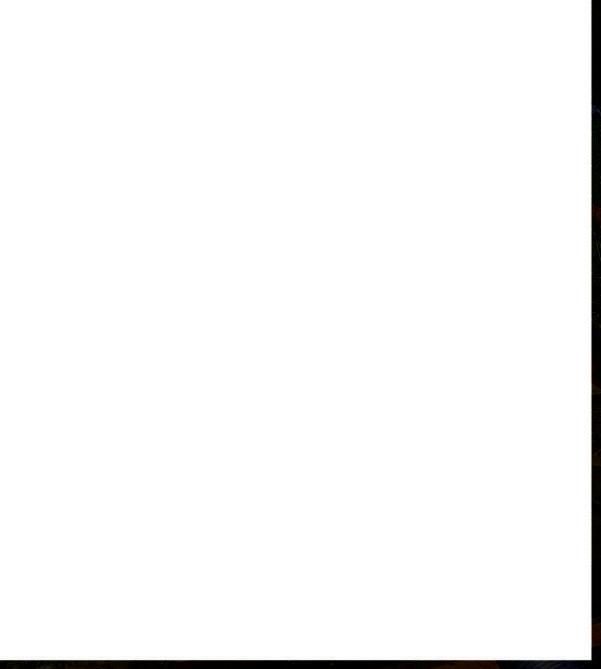



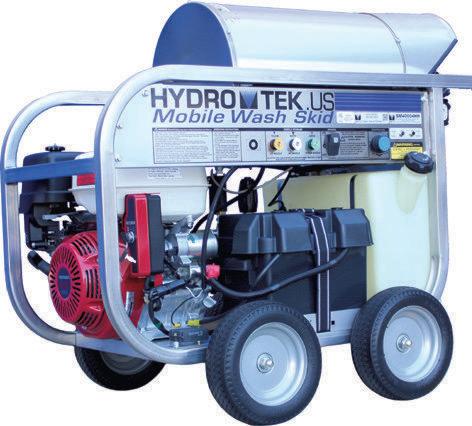
With farmers focused on maximising yields and harvesting at thisbusy time,it’seasyfor the endoffinancial year to creep up unnoticed.
Aussie Pumps wouldlike to alertfarmers andsmall businessowners to theGovernment’sInstant Asset Write-off supportwhich finishes on 30th June 2024.
Aussie Pumps is urgingbusiness ownerstoconsultwith their taxagent to determine if they areeligible.
Companieswitha turnover of lessthan $10 million can getthe benefit of instantlywriting offassets worth individually up to $20,000.
The benefitsare enormous!
Farmers needtounderstand that nowisthe timetobuy andtake advantageofthese taxincentives
Aussie Pump’sFinance Manager, BrianCocker says “No-onewants to paymoretax thanthey have to,and the current Instant Asset Write-offfor small businesses is settoend 30th June 2024”.
Excellent growingconditions areexpected acrosslarge partsofAustraliathiswinterwithaforecast rebound in agricultural production by ABARE
In response, Aussie Pumps has movedtoincrease productionoftheir popularAussieSmart Pumps,to assist farmers with handling corrosive liquid fertilisers safely.
Aussie introduced their 2” and 3” SmartPumps justas liquid fertilisers begantoreally take off.
The pump end is made from 30 percent glassfilled polyester materialdevelopedfor NASA and is made by injection mouldingtoensureexcellent consistent quality.
The pumps arecorrosion resistant andhandle virtually all agriculturalchemicals from weedicides and pesticides to liquid fertilisers
“Welearnt alot from workingwithGoldacres.
Theirteamwerebusy designing theinnovative Batchmate as an adjunct to theirterrific sprayer production.
To think that we canwork with acompanyoftheir calibreand quality was agreat stimulustous” said John HalesAussie PumpsChief Engineer
AussieSmartPumps’unique configurationreally suited what Goldacres weresetting out to do.
Theyneeded apumpthatwouldhandleliquid fertiliser, throughthe batching process,aswell as being capable of fast filling big sprayers in thefield
“A hydraulic drive pump wasuseful formobileplant applications(sprayers)
We knowthatfarmers wereusing aluminiumfirefighting pumps,orsometimes end suction cast iron pumpsto handleaggressive liquid fertilisers.

Those pumps didn’t lastlongand were horrifically inefficient”, said Hales
Aussie introduced theSmartPump to provide not only asolution thatwould handle arange of liquidsbut also provide real efficiencies.
The 2” pump is available withtwo different impeller options.
One is ahigh flow impeller that delivers up to 835litres perminute. It offersa maximum head of 25 metres, approximately 35 psiinpressure.
Thehigh head impellerdeliversless flow,only720 litres perminute buthas amaximum head of 37 metres, approximately52psi.
Both configurations usea HondaGX200 6.5HP recoil startengine and will draw water through avertical lift of 7.6metres!
Threedifferent elastomeroptions give users theability to handle arange of chemicals.

For example,EPDMelastomers arecompatiblewith mostagricultural chemicals andliquid fertilisers
Viton elastomers suit awider range thatincludes diesel fuel, seawater, andsome other chemicals.
“Viton is agreat synthetic materialnot natural rubber but canbeless flexibleand harder than EPDM or our third option,BunaN”, said Hales
TheBunaN versionsare compatible withdiesel fuel, oils,evenseawater
The“N” standsfor Nitrile
It’saflexible elastomer but, not whatwerecommendfor agriculture chemicalsorfertilisers”, said Hales
The company hasfound increasing demandfor their 3” version with bigsprayers nowutilising 3” pipework to enable fast filling of thetanks
The 3” high flowversion,willdeliverupto1010litresper minute andamaximum25metre head using the same engine, GX2006.5hpHonda
Thehigh head version of the3”pump will producea maximumheadof37metresand deliver aflowupto 870litres per minute.
Of coursethere is also ahydraulic drive version of the 3” pump than can runoff thesprayer’shydraulic system too.
Alternatively,itcan be supplied with abig 4kW415 volt heavy duty motor for static installations.
AustralianPumpIndustriesisfocused on meeting market needs throughresearchand user feedback. Theydesignproductstobemoreefficient, ultra-reliable andtolast alifetime.
The inspiration is the feedbackfroma widerange of customerswho use their products
Aussie’s preoccupation is self-priming centrifugal pumps andhigh pressurewater blasters.
The rangethey have developed over thelast 30 years is the most complete and versatileinthe industry!
Correct pump selectioniskey to thesuccess of any on- farmwater project
Aussie Pumps understands that engine powered products need local support during their life cycle
That is whythey have established anetwork of reliable, professional Gold Distributors whoare trained on pump selection, areauthorised to maintain Aussieproducts, andwho deliver good customer service.
To find out more aboutthe pumps mentionedabove, contactthe team at Brownwigg Bairnsdale,on035152 1313 or their other branches at MaffraorMeeniyan
Or usethe AussiePumpwebsitetolocateyourlocal Aussie GoldDistributor or callAussiePumpsdirectly on 02 8865 3500 |aussiepumps.com.au




















































































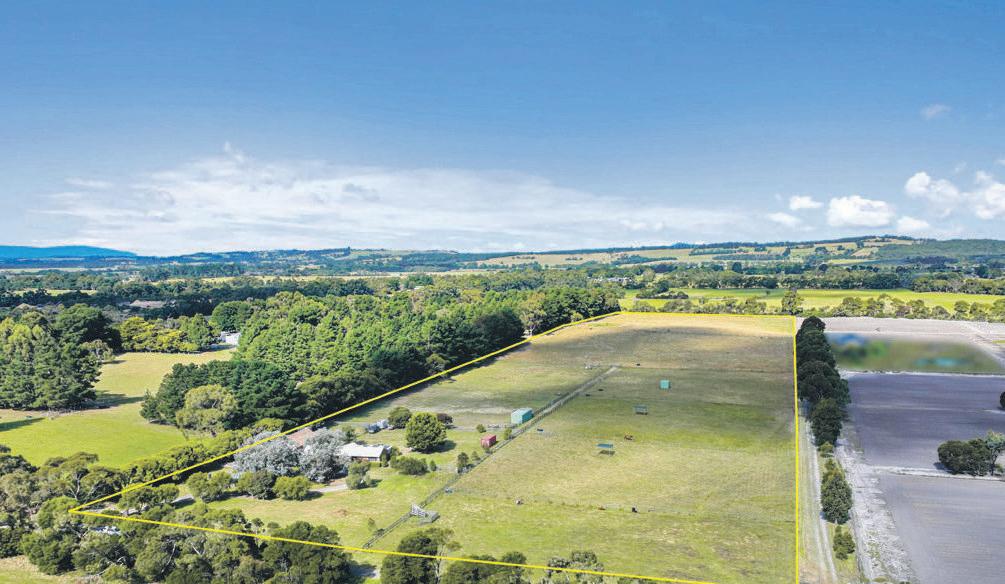















































































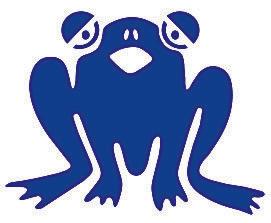





AUSTRALIA'S carbonmarket has been called into question again, with agroup of scientists alleging that carbon sequestration in alarge portion of the projects has been overstated.
Led by Australian National University professor AndrewMacIntosh, the scientists trawled through Australia’s human induced regeneration (HIR) projects, which aim to promote the growth of existing trees through changes in grazing management or avoiding systemic clearing.
Going through aseries of projectsthat have been issued acombined 27 million credits, they concludedthat the vast majority of them experienced anegligible or negative change in tree cover.Itisalso concluded that the tree cover change was similar to adjacent areasthatwerenot under acarbon project.
The industry’speakbody,the Carbon Market Institute, says the study only coveredaportion of the data neededto claim carbon credits. Behind the scenes, decisions arebeingmadeaboutHIR. The methodology ceased toexist at the end of last year andthe government is planning to roll it into anew methodology called Integrated Farmand Land Managementwith the Environment Department to have adraft of it ready this year
Recently, the department has shown cold feet about the HIRelementofthe new methodology, indicating to the carbon industry that it was going to push ahead without it. After aseries of meetings, the department backtracked on those plans and agreed to keep the original plan of having adraft ready for the end of the year
The government will need to sign offon the new methodology for it to exist. It will need alarge supply of credits to meet its

targets of a43per cent emissions reduction by 2030 and net zeroby2050. The carbon industry is keen to get on with it, as the prolonged development of IFLM has significantly slowedthe developmentof new projects.
Prof MacIntosh and his team arewanting the concernsthey have been raisingfor years to be taken seriously by regulators. Caught in the middle arelandholders, some who areall for HIR projects, others who are sceptical of them and all of themdealingin apolitical landscape that is not favourable to bulldozers. What is the issue withHIR?ProfMacIntosh and the ANU team arenostranger to highly publicised criticism of Australia’s carbon

market. In 2022, he “blew the whistle” on the carbonmarket for similar reasons to the latest research.
In response, the current federal Labor government acted on an election commitment to review the carbon creditingsystem -commissioning aformer Chief Scientist, Prof Ian Chubb, to lead it. The Chubb-review largely dismissed the integrity concerns, with Prof MacIntosh and the team being critical of it since its results werereleased.
TheANU scientists alsosay alot of the projects don’t meet legitimate “additionality” criteria, which meansthat achange from “business as usual”needstooccur to claim credit for sequestering carbon.
Prof MacIntosh says that alot of the HIR
projects arenot “additional” because reducing grazing pressureand managing pests pass the test.
He argues that grazing has little impact on tree cover,pointing to the woody thickening on grazing land over the past 50 years. The claim is refuted by the carbon industry.
Whatare landholderssupposedtodo?
Additionality is apretty straightforward concept for land that wasclearedhundreds of years ago –and has occurred in Europe and Southern Australia. It normally involves planting new trees.
But it is not as straightforwardinother areas that have neverbeen cleared or have not been cleared in many years.Vegetation management laws have seen an extreme shift over the years. They have gone from people needing to clear land to maintain ownership rights to tight controls and big fines to back them up.
In the courtofpublicopinion,environmental groups have ramped up the pressure on the cattle industry for its clearing credentials,and companies haveresponded with policies to rid their supply chains of “deforestation”. The livestock industry has been trying to keep the emotionallycharged land clearing debate in check.
Cattle Australia have had overwhelming supportfor the continuedwork in this space under the Land Management Commitmentprojectfromfinancial institutions, retailers, the Australian Beef Sustainability Framework and state farmingorganisations.
“The complexity is real, competingpriorities of incentivised outcomes on one hand and regulation on the other,which add to that the international definitions and it's an incredibly challengingarena to be in,”Cattle Australia boarddirector,Adam Coffey, said.
Beef Central







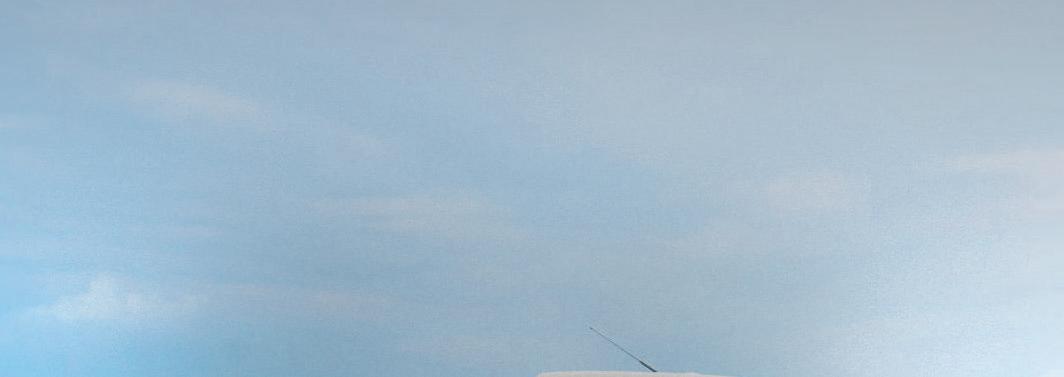










Zaida
GLIBANOVIC TRAILBLAZINGto the top.
The NorthGippsland Football-Netball Leaguehas electedMartha Truin as its president for season 2024.
Truin becomesthe first-ever woman to lead aGippsland country football-netball league.
The former NorthGippsland FNL Vice President has had an extensive history as aleader,being on boards and committees since she was 16-years-old.
With anew guardonNorth Gippsland's committee and Truin at the helm, expect to see some exciting ideasfor thefuture of the league.
"There's only two of us left from the previous board," she said.
"All the other boardmembers areall new,anew league administrator,anew finance and eventsperson,sowe've had some big changes for 2024 but everyone's really keen."
In exciting news, previous long serving NGFNL BoardMember,Brendan Garrett, has returned, re-joining the boardasvice president.
Having worked on the boardduring the COVID era with fixtureand finals cancellations,Truin is no strangertoachallenge, and is eager to tackle any issue head-on to securethe stability and prosperity of North Gippsland as aleague.
Growing up in Glengarry, Truinhas been among community sporting clubs for decades. Previouslyacoach,committee member, secretary, and small business owner,Truin doesn't shy away from keeping herself busy.
The mum of six and grandmothertothree says she has agood support system around her to pursue all her passions.
"I find in any sporting organisations, it's the busy people that aredoing those roles," she said.
"As amum you get involved with the kids …there's always been something and a challenge-itgives you that fulfilment being involved and helping people."
Ahumble woman, Truin says she hasn't thought about what it means to be the first woman in this region to run acountry football-netball league.
"I haven't really thought about …it's just arole and it's just something Iget my teeth into. Ilove organising and delegating and I want to leave it in abetterplace than where it was," she said.
Despite Truin downplaying the significance of her position, thereisnodoubt it will leave alasting legacy.
As the first woman to sit as the head of acountry football-netball league, Truin is paving the path for morewomen and young girls to pursue leadership roles within their sporting clubs and organisations.
With morewomen involved in country footballand netball than ever,Truin's appointmentaspresident marks anew era of Gippslandsport,as traditional patriarchal views arebeing exchanged for genderequality and better conditions for all.








"Wehave had two women club presidents that Iknow of in my time, and that's only been in the last 10 years.The women have stood up and done it very well,"Truin said.
Truin gave highpraise to outgoing NGFNL President, DavidKyle,for his long service to the league. The pair have worked side-byside for many years, so it was only fitting that Truin would come up and assume his role.
"Wehad asuccessionplan Isuppose, I had the history from the past seven-eight years of what's gone on in the board-what's worked,what hasn't worked, what the vision was and what's next," she said.
Truin has already continued in Kyle's footsteps, announcing acontinued partnership with AGL for two moreyears. The partnership includes additional support for their MentalHealthRound,Indigenous Round and of course, theannual Pride Cup -first instigated by the NGFNL.
The NGFNL is eager to build its audience in season 2024.
Truin said the league will focus on building its social media presenceand the event rounds scheduled in the fixture.
NGFNL has introducedthe #BeNorthGippy as an identifying campaign to distinguish itself as acommunity-focused entity.
"The sense of that hashtag and that idea that grew last year was because we want peopletocome be involved.Wemight not be classed as a'premier league', but we want to be knownasthe community, family, and country league," she said.
"Weare about to go onto some television advertising, which willbegeneric and then will lead into our Pride Round,Mental Health Round and our finals.
"Weare trying tobuildour audience through television, newspaper,radio -and we do have ajingle."
Everyone who watched last year's NGFNL
awards presentation would be quite familiar with the North Gippsland song that features acatchy tune that I'm surewas stuck in viewer's heads for alittle time.
Ultimately as president, Truin is driven.
"Wewant to build and grow," she said.
Not only does the new president aim to build the league as a whole, she is actively engaged in facilitating equal opportunity for everyone under the North Gippsland banner
There is no denying that countrysport was once aman's world, with priority placed on senior football sides, but Truin says this is not the case anymore, eagerly saying that North Gippsland's football and netball is equally valued.
"It usedto be thatpeoplewent to the footy to watch the footy -our crowds at the netballare huge andweare getting moreand more," she said.
"You'renot paying at the gate just to watch footy."
With manyclubs actively seeking upgrades tobring facilitiesintothe 21st century, Truinsays it'sagood time for gender equality.
"What'sgood for footy is goodfor netball."
The league has introduced agoal scorer of the year awardfor each netball grade to bring the awards in line with football and celebrate the league's netball talent.
Grand Final breakfastmight also be especially interesting this year,with Truin attempting to get asuper star netballer to speak at the event.
Truin has many ideas to improve the league,with one of her prioritiestoget young kids back into community sport.
"I thinkCOVID didn't help withplayer retention, the two interrupted years. Kids aregetting jobs and you can't blame them because work comes first," she said.
Thoughthere has yetto be statistical
MEMBER for Gippsland South, Danny O’Brien is continuing to call on the state government to providefundstobuild a much-needed new sports stadium for the community of Mirboo North.
O’Briensaidwhile much of the focus has understandably been on stormrecovery of late, the community has been in desperate need of an updated sports stadium for years.
“With the supportof the Mirboo North community, Ihave been lobbying the Labor government over the Mirboo North community’s desire for anew basketball stadium for years now,” he said.
“It is very evident to anyone who cares to take alook that the current stadium, which is shared by Mirboo North Secondary
College and Primary School and the wider community, is not fit-for-purpose.
“I was pleased to host the Minister for Community Sport, Ros Spence to visit the stadium recently and impress upon her the need for funding for anew one.”
Mr O’Brien said the current stadium is clearly awell-usedand important community asset used by not just the schools, but by the basketball association, Mirboo North Football-Netball Cluband anumber of other sportingand community groups as well.
“Thisisa well-lovedfacilitythat sees a lot of usage between the schools and community groups, but it is old, falling apart and not up to current standards.
"Indeed, for sporting purposes, the facility
proof of lower participation rates in North Gippsland footy, Truin remains alert and ready to proactively attack the issue in meetings with AFL Victoria.
The new president is eager to encourage more youth into the league for the many benefits.
"Footy-netball clubs arecommunity based, its somewheretofeel part of something, not to be alone …it's great to be a part of something," she said.
The new president also has some left field plans. She is keen to ask clubs how they would feel aboutanotherseniornetball grade,withmanyclubshaving great strength in seniornumbersand turning some women away.
Truin's not so keen on the idea of bringing fourths football to North Gippsland, with apassionate respect for junior leagues around the region and the development of young sportspeople.
Leagueexpansion has been ahot topic as well, especially after Mid Gippsland FNL club Morwell East looked certain to become the NGFNL's12th club this season, only to see their application stoppedbymember clubs, going againstexpectations of the NGFNL Board.
Despite the result, Truin said it was pleasing to knowNorth Gippsland was a destination league for some clubs.
"We must be doing something right here, they (other clubs) want to come to us, they see the good we do here, and Ithink it's healthy to have astrong competition and abroader competition," she said.
Thereare many rumours of other clubs from nearbyleagues considering making the move to North Gippsland.
With Thirds numbers areal issue at the forefront of Truin’s mind, she believes clubs likeMorwell East, who havestruggled to maintain junior numbers in recent years, would benefit fromNorth Gippsland's streamlined fixture.
"Yes,they don't havethirds at some of those clubs, but Ithinkfor thoseclubs if they aregoing to the same spots as the rest of the club and with good competition they would benefit …build it and they will come," she said.
Though expansion is on the cards, Truin says it is not apriority, citing the positive example of bringing YallournYallournNorth to the fold in 2021.
Arguably the second-bestleague in the Latrobe Valley,Truin says numbers are growing and so arecrowds.
"Ourlasttwo yearsoffinalshavehad huge success out at Heyfield with records at the gates," she said.
With Churchill eager to host aGrand Final since the establishment of their second netball court, president Truin said Gaskin Park was aviable host option and the venue will be assessed for futurefinals.
As the NGFNL season is now underway, therewill no doubt be adifferent perspective with Truin at the helm. However,expect the focus to remain the same: #BeNorthGippy.
doesn’t evenmeet current competition standards –particularly with respect to size and run-offareas.”
The South Gippsland MP said that the previous petitions he had presented to the state government had fallen on deaf ears, and washopefulthatprogress couldbe made in the wake of the February storm event.
“I have spoken with both schools and the various sportingorganisations over the years, and they have always demonstrated thattheyare keen to work together to deliver the best outcome," he said.
“Weare now just waiting for the Allan Labor government to get on boardand fund the project.”

Liam DURKIN
OF all the local football seasons, and indeed all the stories that make up ayear in country footy, few could surely rival what was seen adecade ago.
Season 2014 may well go down as the most memorable year of football in Gippsland.
If not just for the epic Grand Finals staged across the leagues, but for the vast array of subplots that emerged, many of which interconnected and helped shape the fortunes, and even slight demise, of clubs in the years that followed.
For those teams thatfound themselves fighting their way out of improbable positions, to those individuals lucky enough to take top billing as main players, their deeds have livedlonginthe memory,and may well be the very thing they areremembered for -either fairly or unfairly.
Those who wereatTed Summerton Reservefor the 2014GippslandLeague
Preliminary Final will surely never forgetthe wobbly snap sent through by Michael Kelly.
Many people have probably never heard of Michael Kelly. He was the man who put the Power in front for the first time in that prelim, as they overcame a45-point three quarter time deficit against Sale.
As much as itwas aCinderella Story for Wonthaggi, it was asecond successive nightmarefor Sale.
The Magpieswatched on as another shot at thetitle slipped from their grasp, following aseemingly impossible Grand Final loss to Morwell the year before.
Having won the premiership in barnstorming fashion in 2012, thereisanundeniable sense Sale missed agolden opportunity to complete athree-peat, thus putting them among the truly great sides in Gippsland League history.
To think how different the course of historywouldhave been if they'd wonjust three extra games of football.
The 2014 prelim however carried with it astark reality.
Wonthaggi was never winning the Grand Final after that.
And so it proved, as Morwell went on to complete back-to-back triumphs.
Another story however unfoldedinthe

aftermath of the 2014 Grand Final.
Who would have thought Morwell's coach would be sacked just two rounds into the very next year? It happened.
Who else would have thought Leongatha would miss finals?
Suchathought isalmostunthinkable given whatthe Parrots have achieved since Season 2014 may well have been the turning point for the green and gold. Beau Vernon came in as coach the next year, they madethe GrandFinal, and havekept doing so ever since.
Maffrawent down asimilar path around this time. The Eagles, with Wayne Butcher back for his second stint as coach, exited finals in the second week, but progressed to play Leongatha in four consecutive deciders from 2016 to 2019.
Maffra and Moe foundthemselves strangely tangled up in 2014, when Eagles great Adrian Burgiel took on the coaching job of the Lions.
Onecan only imagine the difference he felt going from one of the most successful clubsinthe leagueto ateam coming off consecutive wooden spoons.
Another team not usually associated with missing finals is Traralgon.
The Maroons did so however in 2014 -and went on to win the flag the next year
What happened over the 2014/15 summer,orindeed during 2014 that provided the change?
Ateam that did make the finals in 2014 was Bairnsdale.Itremains the last time the Redlegs have made finals in the major league since re-joining from East Gippsland in 2010.
The 2014 EastGippsland Grand Final itself was one for the ages.
Stratford,who squandered the lead to Wy Yung for the first time all game with less than two minutes remaining, hit the front in the dying seconds courtesy of a clutch set shot from Josh Kiss.
It was Kiss' only goal for the game from only ahandful of possessions.
Some distance away, the Mid Gippsland decideralso came down to the lastkick of the day.
The kick itself only made up part of the story, as it came from the boot of Mirboo North cult heroShane Peters.
Peters, morecommonly known as 'Choco', graciously gave up his spot in the Mirboo North premiership team the year before, and went on to kick the winning goal in a one-point Grand Final win 12 months later
That the Tigers won the flag after losing the semi-final by 90 points added another disbelieving element to what transpired.
Peters could nearly label 2014 'The Year of Choco', as the footy triumph came six months after Mirboo North won acricket premiership from asimilarly impossible position.
The Tigers were5/90 chasing the best part of 300 in the Central Gippsland
decider,and ended up winning in the 100th and very last over of the second day.
Number 10, Dale Banks made 26 of the most important runs of his career,partnering with Rob Phoenix in a91-run stand for the ninth wicket.
For all the hundreds of wickets the legspinner has taken, it is perhaps this innings for which he will be most remembered.
Jumping backtoStratford,theytoo experienced their own nerve-killing cricket Grand Final in 2014.
The Redbacks still needed atricky 30 runs to win the Sale-Maffra Cricket Association title with three wickets in hand, and it came down to the final pair of Jack Rietscheland Simon Waixel to see Stratfordover the line.
Rietschel, avery young man then, has gone on to be one of the leading all-rounders in Gippsland.
Someone with asurname synonymous with Heyfield played cricket with Stratford last season in Tyson Birss.
His dadDamien tookHeyfieldtotheir thirdsuccessiveNorth GippslandFNL Grand Final in 2014.
However,indramatic scenes, the Kangaroos lost to Churchill on the big day after going through the season undefeated. Thiscame afterHeyfield lostthe Grand Finalto Glengarry in extra time the year before.
While therewas apremiership in 2012, the subsequentrun, which endedwith four successive Grand Final defeats from 2013-16 led to some labelling it the 'Birss Curse'.
Far from Grand FinalswereGippsland League clubs Warragul and Drouin. Warragul won just two games for the year -Drouin went three weeks without even kicking agoal.
Talks of relocationwerecommon for both during the season, but adecade on, they remain part of the major league.
Ask most long-serving local footballersthe stories from the tough times areoften moreinteresting than the ones glittered with success.
As the 2024 season is now underway, it will be interestingtolookbackadecade on to find out if 2014 really was the greatest season of Gippsland footy.
TomHAYES
PEOPLE like this don’t come around often. Morwell Cricket Club celebrated arare occurrence towardthe end of the Cricket Latrobe Valley season, when veteran Marty Giddens broughtuphis 500thgame for the club.
Giddens was essentially borninto cricket and the Morwell Cricket Club, so it was inevitablethathewould be involved one way or another
“My dad was apast president for five years or so …heplayedsincethe 1960s, and obviously Craig, my brother,heplayed as well–he’s stillplaying at themoment,” Giddens said.
“I was basically borninto the club, and we started playing when Iwas about nine. We played Under 16s, because we had no juniors.”
Naturally, Giddens would continue to develop rapidly,playing with kids up to fiveyears olderthanhim atthe time he started out.
This led to Giddens winning the Junior Cricketer of theYearintwo consecutive seasons in 1992/93 and 1993/94. In the1993/94season,Giddenscaptainedthe Under 16s to apremiership, scoring 53 runs in the decider
It was only amatter of time beforehe found himself playing senior grade cricket.
“When Iwas about 14, Istarted playing CGrade with dad, and as it progressed got further up into BGrade, then AGrade. So I’ve been playing for 36, 37 years,” he said Giddens ended up playing“17 or 18 years” of AGrade cricket for Morwell.
One of the biggest highlights of his career werethe two AGrade premierships he won, in 1998/99 and 2002/03. But he also recognised acollectiveeffort in the 2017/18 season,when Morwell’sA,Band CGrade all won premiershipsinthe Central Gippsland Cricket Association.
Giddens was playing CGrade by then, but aclub three-peat doesn’tcomearound often, if ever
Giddens was givenlegend statuswhen he was inducted as aMorwellCricket Club Life Member last year
When finding out he was playing his 500th game in February, Giddens felt humbled.
“I was actually surprised, Ididn’t know until the Tuesday before the game and they said, ‘you’ve got 500 games this week’ and Ithought ‘what?’”, he said.
“I’m very grateful, Iwas quite embarrassed actually, Ithought ‘500 games, I’m getting too old!’”
Giddens joined an exclusive club of only one other person to play 500 games at Morwell Cricket Club, joining fellow club legend Mark Smith.
Throughout his career,atthe time of playing his 500th game,he had scored morethan 7500 runs with ahigh score of 115, to go with 21 half centuries. He is rankedsixth at Morwell Cricket Club for all-time runs.
He has been handy with the ball and in the field too, taking 209 wickets and 192 catches with astumping.
He was BGrade captain for nine season and was the AGrade assistant coach and vice-captain earlier in his career
Giddens has begun to develop the youth, coaching juniors for the last five seasons, and continuesto be aleader,captaining CGrade.
As the owner of Silvers Bar and Grill, Morwell, Giddens has played amajor part in the club’s seafood days, as his efforts in thekitchenprove to be abig part of fundraising efforts.
What has kept Giddens in the game for so long?
Quite simple really.
“Just the mateship and the love for the game. Obviously, Iwas borninto cricket so its one of those things, Ijust love it,” he said.
Now 46-years-old, Giddens hopes he still has something left inthe tank. His son Harley, is currently playing under 12s Maybe oneday they could line-up together
Youmight be wondering how Morwell

went in the Cricket Latrobe Valley finals. Well, it’sfairtosay that Giddens can add another premiership to his long list of accolades, after Morwell’s PremierC Grade took out the premiership, defeating CATS in the decider
What away to cap offsuch amemorable season.



